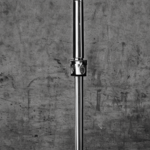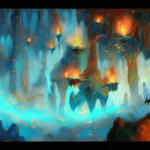Summary:
Weather radar is a technology used to detect and track precipitation, as well as monitor severe weather conditions such as thunderstorms, hurricanes, and tornadoes. It works by emitting radio waves that bounce off precipitation particles in the atmosphere and then measuring the time it takes for the waves to return. This information is used to create images and data that meteorologists can analyze to make weather forecasts and issue warnings.
How Weather Radar Works:
Weather radar systems consist of a transmitter, a receiver, and a display unit. The transmitter emits short pulses of radio waves, which travel through the atmosphere until they encounter precipitation particles. When the waves hit these particles, they scatter in all directions. Some of the scattered waves return to the radar system and are detected by the receiver. By measuring the time it takes for the waves to return, the radar can determine the distance to the precipitation.
Types of Weather Radar:
There are two main types of weather radar: reflectivity radar and Doppler radar. Reflectivity radar measures the intensity of the returned signals, which is related to the size and concentration of the precipitation particles. This information is used to create images that show the location and intensity of precipitation. Doppler radar, on the other hand, measures the velocity of the precipitation particles. By analyzing the change in frequency of the returned waves, meteorologists can determine the speed and direction of the precipitation.
Applications of Weather Radar:
Weather radar has numerous applications in meteorology and weather forecasting. It is used to monitor and track the movement of storms, including thunderstorms, hurricanes, and tornadoes. By analyzing the radar images, meteorologists can predict the path and intensity of these weather systems, allowing them to issue timely warnings to the public. Weather radar is also used to monitor rainfall patterns, snowfall rates, and the presence of hail in storms.
Limitations of Weather Radar:
While weather radar is a valuable tool for meteorologists, it does have some limitations. One limitation is that radar beams can be blocked or attenuated by tall buildings, mountains, or heavy precipitation. This can result in “radar shadows” or areas where the radar cannot detect precipitation accurately. Additionally, radar cannot directly measure certain weather phenomena, such as temperature, humidity, or wind speed. These variables are typically measured using other instruments and then combined with radar data to create a more complete picture of the weather.
Future Developments:
Advances in technology are continually improving weather radar systems. One area of development is dual-polarization radar, which can provide more detailed information about the shape and type of precipitation particles. This allows meteorologists to better differentiate between rain, snow, and hail. Another area of research is phased array radar, which can rapidly scan the atmosphere and provide more frequent updates on weather conditions. These advancements will enhance the accuracy and timeliness of weather forecasts and warnings.
Conclusion:
Weather radar is a crucial tool in meteorology, enabling meteorologists to detect and track precipitation, monitor severe weather conditions, and issue timely warnings. By emitting radio waves and analyzing the returned signals, radar systems provide valuable information about the location, intensity, and movement of weather systems. While radar has its limitations, ongoing advancements in technology are improving its capabilities and enhancing our understanding of the atmosphere.












